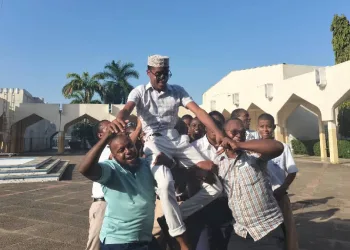A report by the Judiciary’s National Council on Administration of Justice reveals that over 1,000 children are currently detained in various facilities across Kenya, primarily due to involvement in criminal activities. The report states that 1,019 children are spread across different detention centers, with most residing in child remand homes after being in conflict with the law.
These centers include children’s rescue centers, remand homes, reception and assessment facilities, as well as rehabilitation schools. According to data from the council, while the number of children admitted to these centers continues to rise, the number of children exiting the institutions is also substantial.
As of June 2023, data from five children’s rescue centers showed that 757 children were admitted, while 555 were discharged, leaving 202 children remaining. In nine children’s remand homes, 3,620 children were admitted, 2,952 exited, and 688 remained. In two reception and assessment centers, 234 children were admitted, with 212 leaving, leaving 22 behind. Additionally, in nine rehabilitation schools, 298 children were admitted, 171 exited, and 127 remained.
The Directorate of Children Services, which manages these facilities, handles cases of children who are lost, abandoned, or in conflict with the law. The government also oversees borstal institutions, which house young offenders who have committed serious crimes but are too young for regular prison. These institutions focus on rehabilitation through vocational training and counseling.
Borstal institutions, introduced in 2016, provide a setting for children below 18 who have committed serious offences. There were only three such institutions in the country as of 2016. In response to rising issues with student misconduct, the Ministry of Education had suggested expelling students who engaged in criminal activities, such as fighting teachers or burning schools. However, the National Parents Association argued that such measures would harm the children’s futures and called for expanded and improved borstals and rehabilitation centers to better address their needs.
The NCAJ report also highlights the continuing issue of children living in prisons with their mothers. In 2012, it was revealed that hundreds of children under the age of four lived in prisons with their incarcerated mothers, enduring poor conditions. As of the latest report, 80 children are living with their mothers in Lang’ata Women’s Prison, where they remain due to the policy of not separating mothers from their children.
















